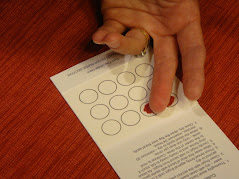What is self-directed health? Part III
The investment industry: Model of self-directed behavior
Up until the 1980s, individual investment was managed by a stockbroker or other money manager.
Stockbrokers, analysts, and investment houses commanded the flow of investment in stocks, options, futures, commodities, bonds, and derivatives.
Individuals lacked access to the methods and knowledge that allowed them to manage their own portfolios. They had no choice but to engage the services of a professional investor.
That has all changed. Today, the process has largely converted to discount brokers and online services used by individuals trading and managing their own portfolios. Stockbrokers and investment houses continue, of course, but are competing for a shrinking piece of the individual investment market. Independent investors now have access to investment tools that were not even in existence 20 years ago. Companies that serve individual investors like E-Trade and Ameritrade now command annual revenues of approximately $2 billion each.
I believe that the same revolution that shook the investment industry in the 1980s will seize healthcare in the near future. In fact, the transition to self-directed health will dwarf its investing counterpart. It will spread more vigorously through our lives, since health is a more complicated “product,” with more complex modes of delivery, and more varied levels of need. Nonetheless, the emergence of health directed by the individual, just as the emergence of self-directed investment, will explode over the coming years.
Up until the 1980s, individual investment was managed by a stockbroker or other money manager.
Stockbrokers, analysts, and investment houses commanded the flow of investment in stocks, options, futures, commodities, bonds, and derivatives.
Individuals lacked access to the methods and knowledge that allowed them to manage their own portfolios. They had no choice but to engage the services of a professional investor.
That has all changed. Today, the process has largely converted to discount brokers and online services used by individuals trading and managing their own portfolios. Stockbrokers and investment houses continue, of course, but are competing for a shrinking piece of the individual investment market. Independent investors now have access to investment tools that were not even in existence 20 years ago. Companies that serve individual investors like E-Trade and Ameritrade now command annual revenues of approximately $2 billion each.
I believe that the same revolution that shook the investment industry in the 1980s will seize healthcare in the near future. In fact, the transition to self-directed health will dwarf its investing counterpart. It will spread more vigorously through our lives, since health is a more complicated “product,” with more complex modes of delivery, and more varied levels of need. Nonetheless, the emergence of health directed by the individual, just as the emergence of self-directed investment, will explode over the coming years.




0 comments:
Post a Comment